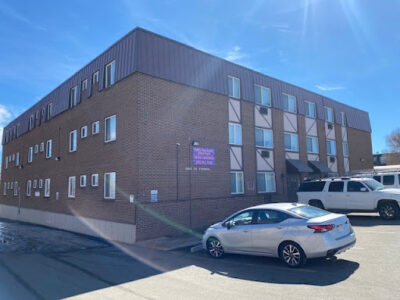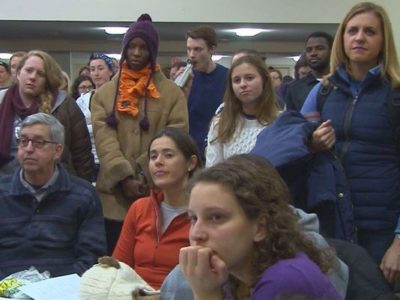Deborah Knowlin slowly limps to her kitchen table, favoring her left knee because her right one, she says, gives out frequently.
Sitting down at the table, Knowlin snaps open a day-of-the-week pill box and empties Friday’s contents into her right hand: a half-dozen pills. Knowlin, 54, used to take 13 medications a day to manage her long list of ailments, including Type 2 diabetes, back pain from four slipped discs, liver cirrhosis, pancreatitis, high blood pressure and depression.
Her blood sugar dipped and soared when she first started feeling the effects of diabetes a couple of years ago. She would feel dizzy and lightheaded. Then she would go to the emergency department at Saint Francis Hospital and Medical Center in Hartford to have her condition stabilized.
“I’d be trembling,” Knowlin said.
Two years later, with the assistance of a case manager through a local nonprofit, Knowlin has stabilized her diabetes and is on fewer medications. She was among a dozen people in a pilot program by Saint Francis and a non-profit called Community Solutions to reduce emergency-department visits.
The small program is trying to address a persistent problem that may hold the key to holding down runaway health care costs, not just here but across the country: how to keep people, especially in poorer neighborhoods, from using emergency rooms like doctors’ offices. At issue, however, is a much broader challenge of the relationship between poverty and poor health.
Knowlin is like a lot of people in Hartford’s North End who go to the emergency room for all types of medical care. It’s a quick remedy even if the ailments could be treated in an urgent-care facility or by regular visits with a primary care physician and follow-through on medical advice.
People who have Medicaid coverage use hospital emergency-department care at almost twice the rate of people with private health insurance, according to a January report by the federal Centers for Medicare & Medicaid Services, or CMS. It’s not as though there is widespread inappropriate use of emergency services among Medicaid patients, who are typically in poorer health than people with private health insurance, but rather that they struggle with a lack of access to appropriate medical settings, according to CMS.
Treatment at the emergency department is expensive — to taxpayers who pay for Husky health coverage, the state version of Medicaid for people with low incomes; and to hospitals that are reimbursed at lower rates by Medicaid than by either private insurers or Medicare, the government coverage for people 65 and older.
Also, emergency care is not the most efficient or best way to treat ongoing chronic conditions such as diabetes.
Early Success
In the summer of 2011, as Saint Francis looked for a more efficient and coordinated way to treat patients, the hospital developed a registry of all visits to its emergency department with the goal of understanding patterns of use and reasons for those patterns. Hospital staff surveyed patients in the emergency department. They pored over data.
“As we did this data gathering, we realized this is less an issue of patients that could be going to their primary care doctor instead of going to the ED [emergency department], and more an issue of high utilizers, high utilization of the ED [emergency department],” said Gregory Makoul, chief innovation officer at Saint Francis Care, the hospital’s parent company.
If someone goes to the emergency department one time in a year, rather than see a primary care physician, that’s not as significant as a person who goes to emergency department 20 times a year, Makoul said. The hospital narrowed its focus to 54 people, each of whom was treated 18 times or more at the emergency department in 2012.
Saint Francis connected with Community Solutions, a non-profit group in Hartford’s North End. The non-profit is working to improve the health, employment, quality of life and other conditions of people in “Northeast Hartford,” which is a section of the North End.
“Their drive to really try to revitalize the Northeast neighborhood really coincided with this work,” Makoul said. “So, we connected with them.”
The hospital and the non-profit started small, narrowing the list of 54 people who frequent the emergency department to a pilot program of a dozen. Community Solutions assigned a case manager, Nadia Lugo, to reach out to patients — once the patients gave the hospital approval to do so.
The hospital had success in nine months. Emergency department visits by those dozen patients — including Knowlin — were reduced by more than 50 percent, according to Saint Francis. Lugo worked with people to get them to understand their circumstances and to help them get appropriate care.
In Knowlin’s case, Lugo was a patient advocate. She helped to communicate Knowlin’s medical concerns to a primary care doctor at a clinic in Asylum Hill and, aided by a visiting nurse, helped Knowlin follow through on her treatments.
One goal is more efficient treatment. It remains to be seen if cost savings from fewer emergency visits, and better coordinated care for people in poor health, will outweigh the time and money spent by nonprofits, philanthropic organizations and others to fix the problems. An exact accounting would be difficult — what is the value of aggregate health improvements over a long period?




